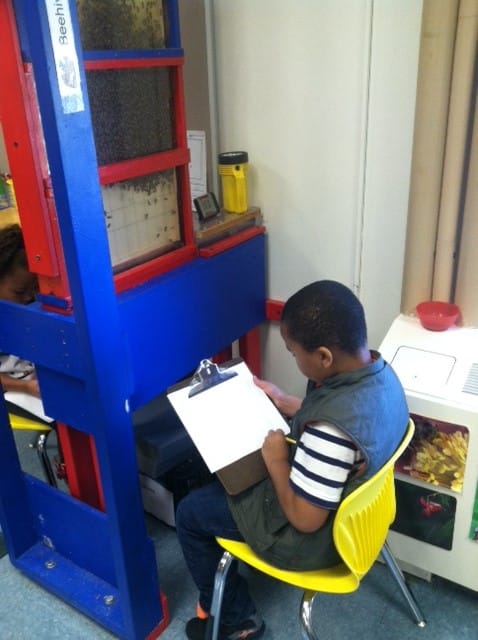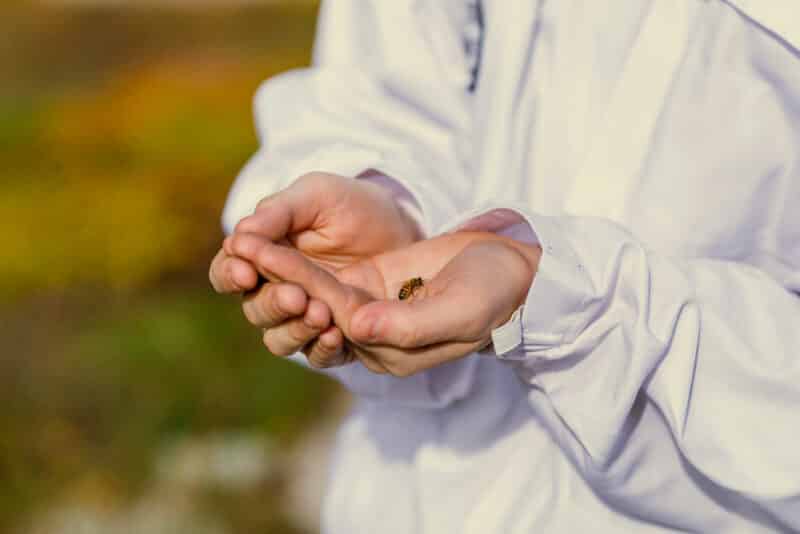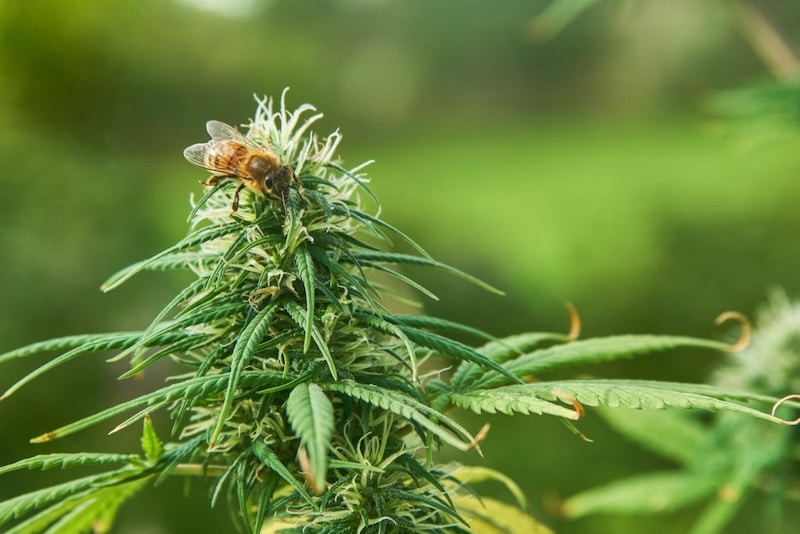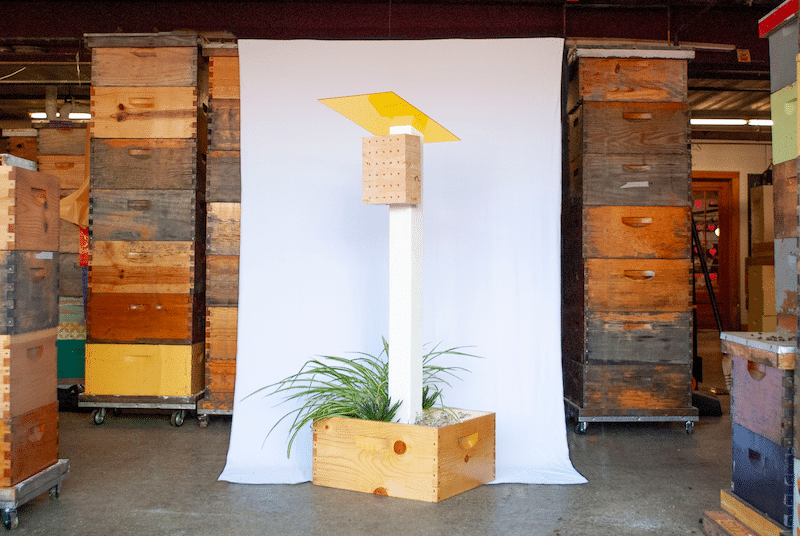If you’re settling back into your workflow and are in need of something educational and worthwhile for your children to learn while they’re at home, you’re in luck. Urban beekeeping, along with urban agriculture, can help people living in cities feel more connected with nature. This connection allows for opportunities to learn about the interconnectedness of plants, pollinators, and people through STEAM education.
Project-based learning with bees can encourage critical thinking skills, problem solving, decision making, inspire art and technology, and ultimately result in the pursuit of STEAM training, education, and careers.
Environmental Education Research reports “honey bees, one of the most crucial insect species providing priceless ecosystem services can be a good medium for environmental education programs to promote children’s innate love towards nature.”
For younger learners, bees can be used to teach:
- animals are living,
- have life cycles,
- interact with the environment, and
- have specific habitat needs.
For older learners, bees can be used to teach:
- classification by their physical characteristics,
- their stages of development including metamorphosis,
- how changes in their environment can lead to either their death or relocation, and
- how bees cause changes in their environment (via pollination).
Thomas Schmitt, Kristian Demary, and Dr. Noah Wilson-Rich in collaboration with Northeastern University, The Best Bees Company & Urban Beekeeping Laboratory and Bee Sanctuary, and Massachusetts College of Art and Design explore the practical uses of bees STEAM learning in elementary through advanced education. Their new book chapter highlights what urban beekeeping is and how students of all ages successfully use bees as a means of project-based learning with a special focus on practical applications.

The authors observed one 10th grade student’s experiences when using the classroom beehive as a learning tool. The student noted:
“I really enjoyed geometry overall, but a concept I enjoyed out of every topic was learning about bees. I learned that bees connect with geometry because of the shape of their hives. They chose a hexagon because it had way more space than any other figure. Since honey is important to the life of bees they want a maximum amount of honey to store in their hives.”
What is the STEAM approach?
Science, technology, engineering, art, and mathematics (STEAM) education uses art and design as an approach to STEM (without art) disciplines in a creative and engaging way according to Stem to Steam. Students learn to think across different disciplines in terms of complex systems to find sustainable solutions to real world problems.
Field-based observations of the natural world, the environment, and human activities are powerful motivators for encouraging scientific learning. Urban areas show how land-use affects biodiversity and are living laboratories waiting to be studied.
Honey bees and STEAM Education
An observation hive is a unique tool for researchers and students to engage in collecting data from live honey bees in their natural, crevice habitat. With project-based learning, the students are able to make observations, form hypotheses, design their own experiments, analyze their results, and present their data visually. Students can graph the productivity (pollen and honey), fitness and fecundity (brood, adults, queen cells), and health (disease/parasite abundance) of the observation hive over time.
As more citizen scientists engage with urban bees, more observations will come to light, leading to an inevitable marriage between STEAM learning and practice, and bees, for future generations to come.

Exploring Bees from Home
Honey bees are a good springboard for STEAM learning at home while addressing and practicing the Next Generation Science Standards (NGSS) across the different disciplines: Life Sciences, Physical Sciences, Earth Sciences, and Engineering, Technology and Applications of Science. Managed honey bees can be viewed either in an observational hive in the classroom or outside in a traditional Langstroth hive. Where this is not an option, wild bees can be observed beyond the walls of traditional classrooms. Viewing bees both in their hives and in nature can foster curiosity and promote the process of science by students designing and conducting experiments. Below are a few examples of things you can do with bees at home with your own children.
- Explore a World Without Bees: Plants Pollinated by Bees Pollination game. Ask your child their favorite food items and dishes. Now try to recreate those dishes with them without using any of the foods that are pollinated by bees. Here are a few items you won’t be able to use: Tomatoes, Onions, Cucumbers, Lettuce, Oil for frying potatoes, Oranges, Lemons, Limes, Mustard seed, Cacao bean (chocolate), Vanilla, Almonds, Watermelon, Apples.
- Bee Observations: One example of project-based learning is an experiment investigating how the age of worker bees determines the tasks she performs. Honey bees change their behavior with age, a process called temporal polyethism. Students first make and record observations, noticing that not all workers perform the same tasks. They begin by asking questions, such as, “Does the age of the bee determine what tasks she performs?”

If observation is not available, then there are still more learning opportunities to help connect your young learners with nature and urban bees:
- A helpful website is PollinatorLIVE: a distance learning adventure, which includes teacher resources, webcasts (in English and Spanish), and links to several citizen science projects.
- Multiple Citizen Science Projects focus on pollinators, such as the Great Sunflower Project and the Bees’ Needs. The Great Sunflower Project has a Google Earth map that shows the average pollinator visits (from 2008-2012) for Lemon Queen Sunflowers across the United States. The results indicate that urban areas tend to have the least pollinator service.
- The Goldenrod Challenge uses photography and a systems-approach to learn about the species interactions at goldenrods. Two Citizen Science projects focus on the impacts of climate change on phenology: and the USA-National Phenology Network (NPN).
There’s so much that we can learn about the world from the comfort of our backyards. Urban beekeeping is an innovative tool that can be used in the classroom. STEAM Education is a great place to start for adding art and design into the math and science fields.






